
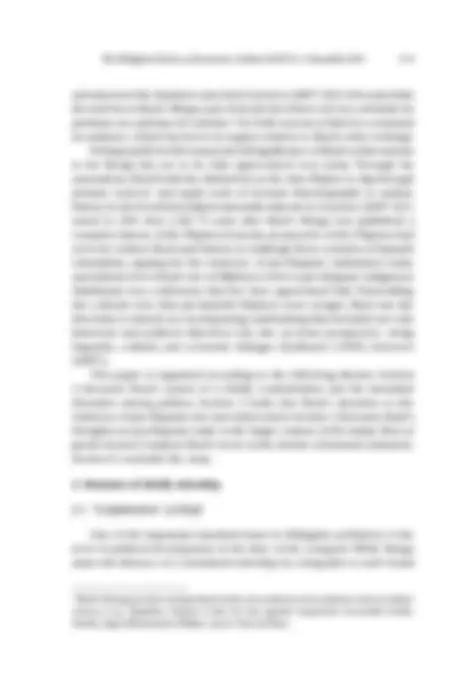


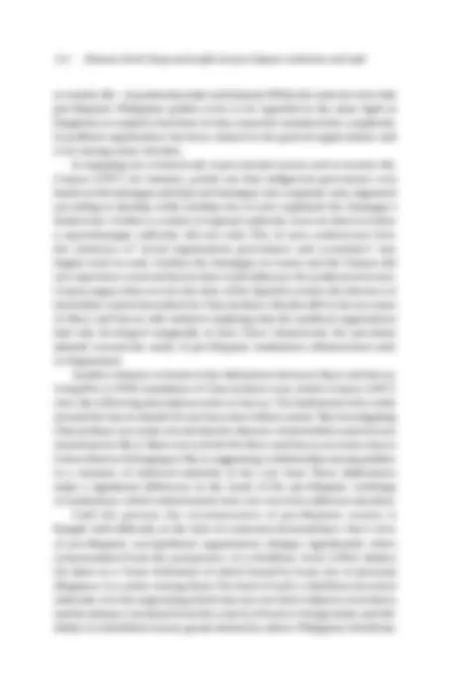
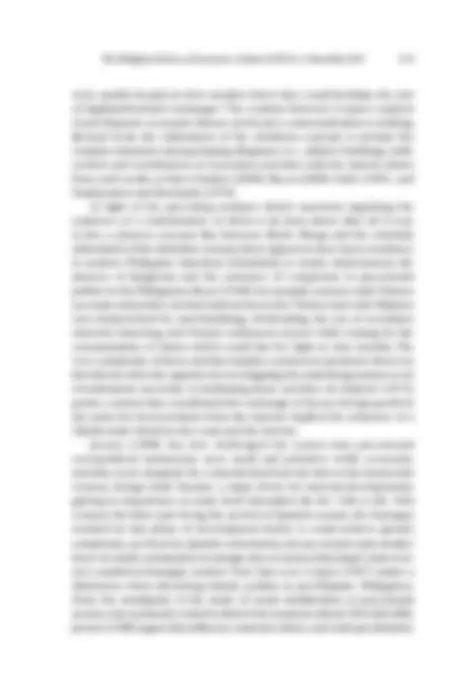

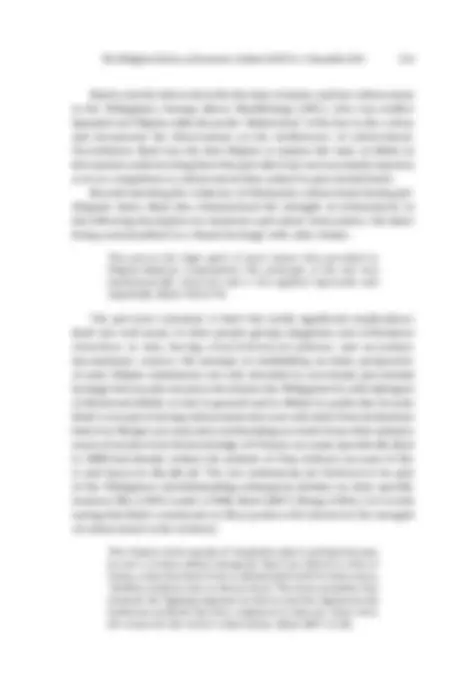
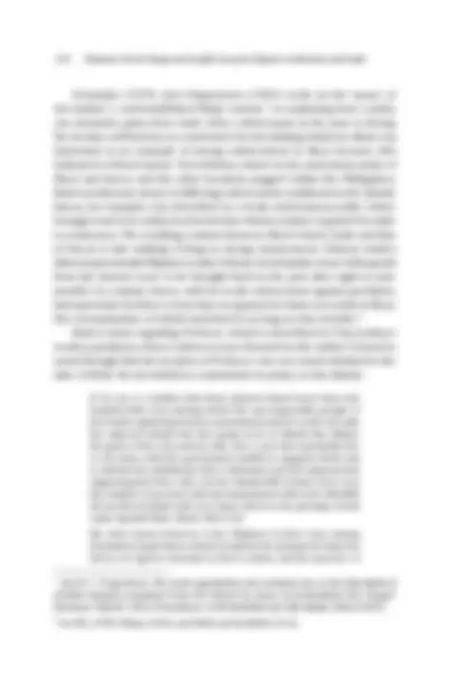

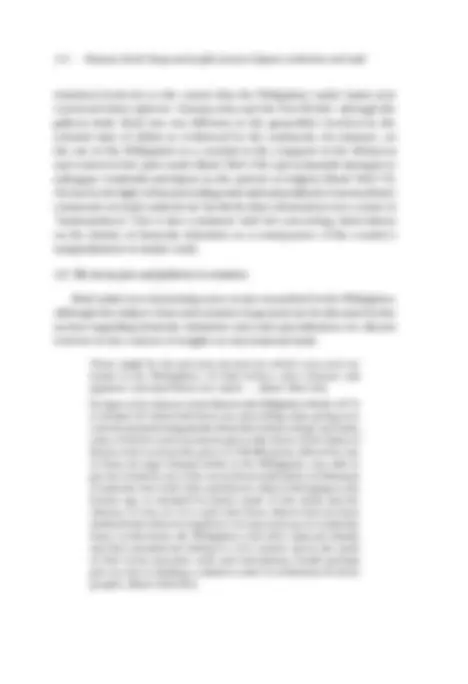
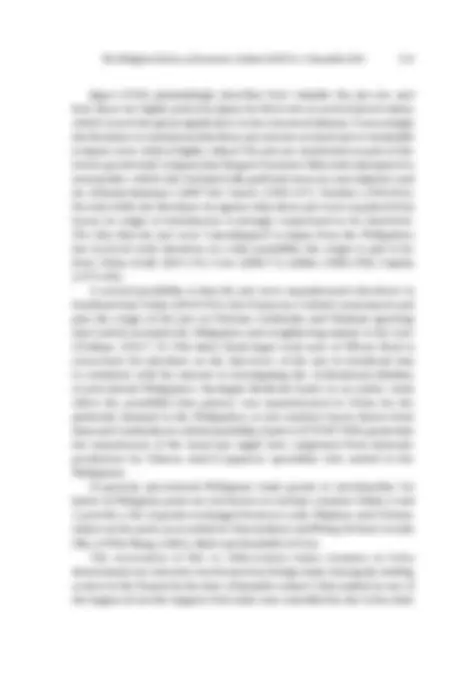

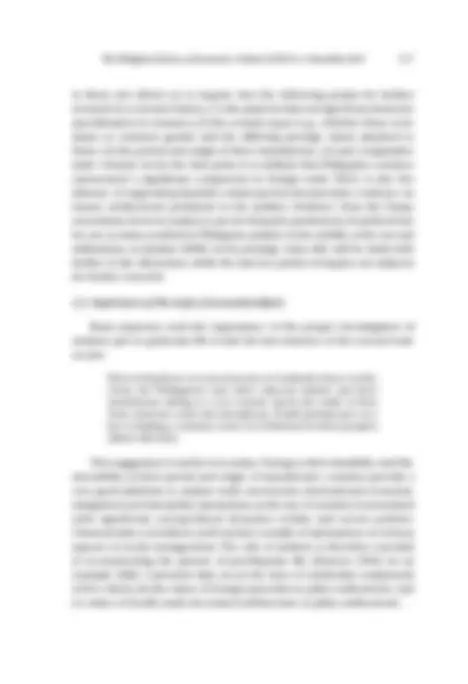
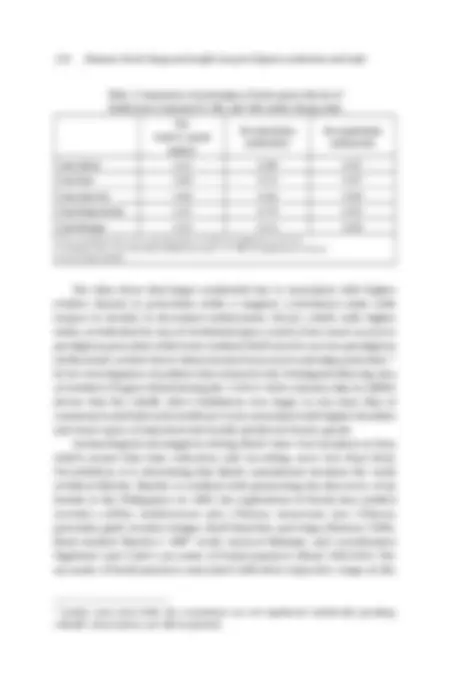
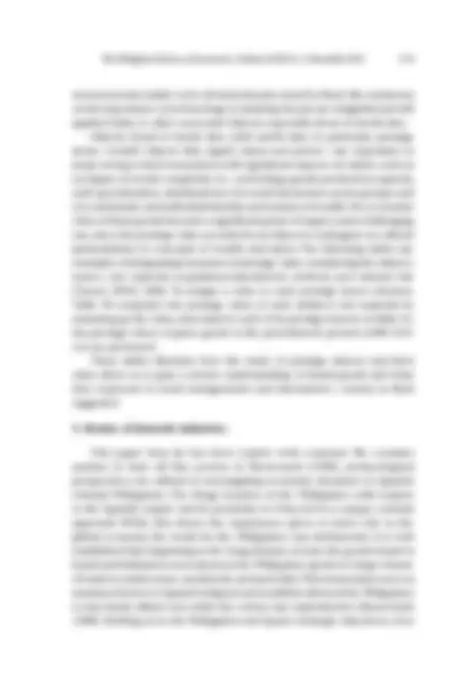


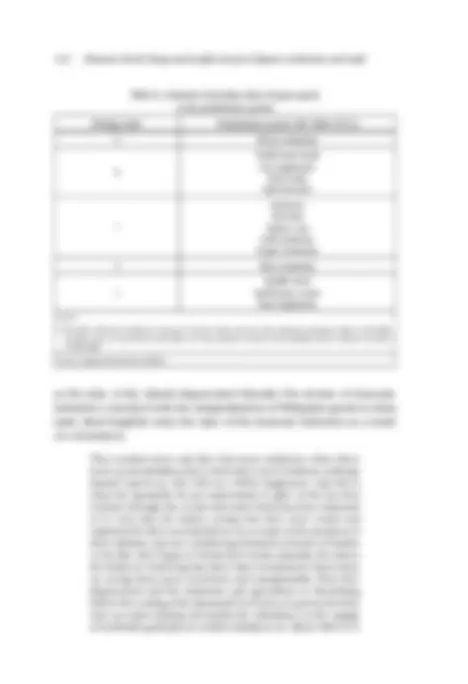
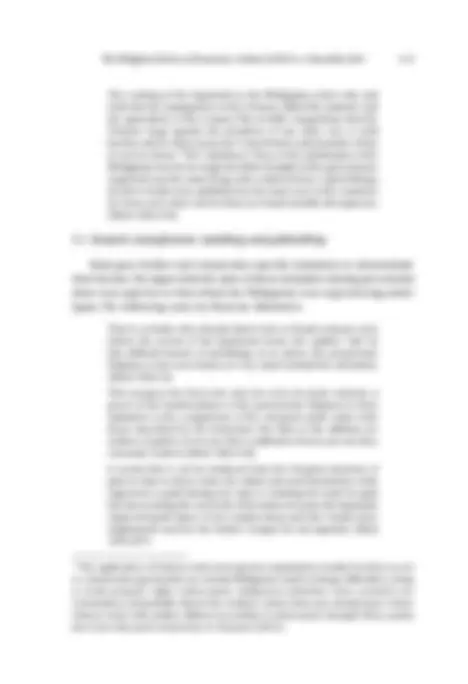
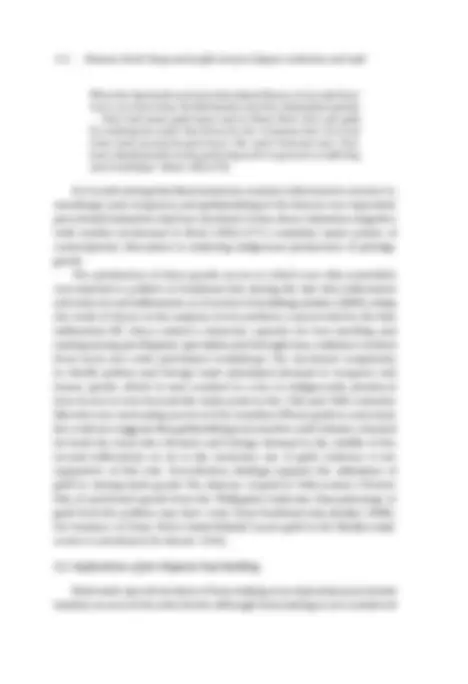
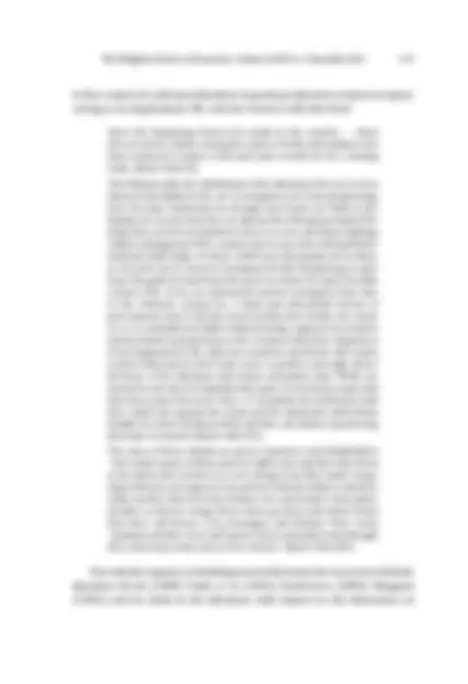
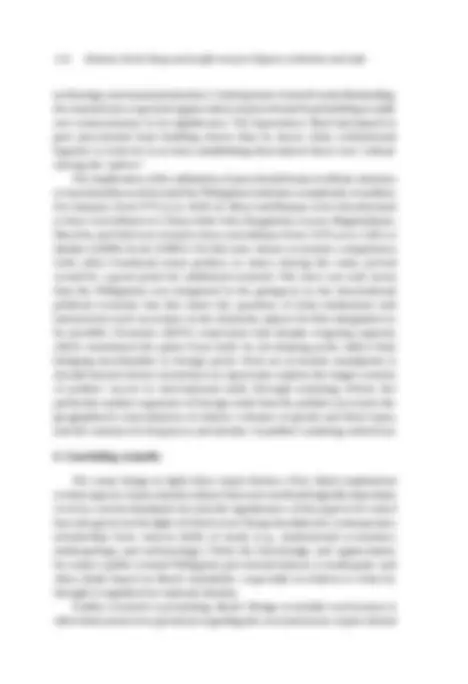
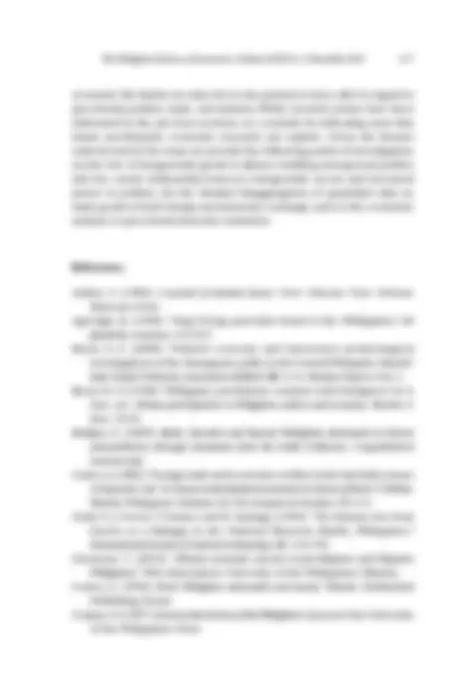
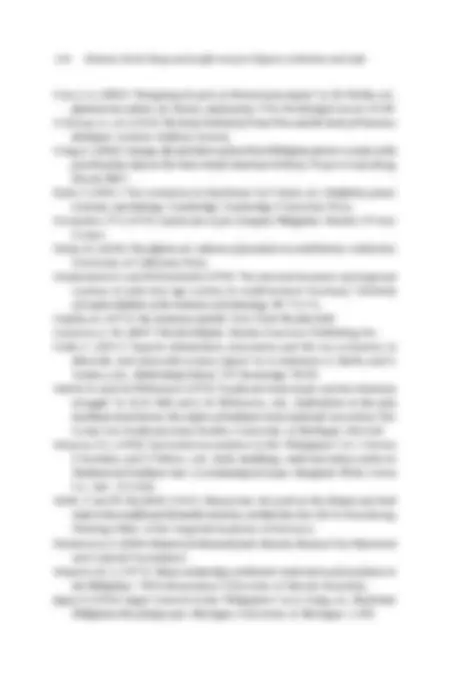

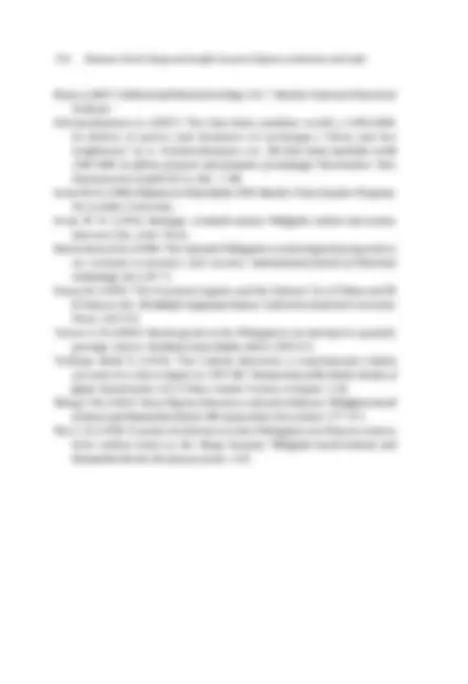


Study with the several resources on Docsity

Earn points by helping other students or get them with a premium plan


Prepare for your exams
Study with the several resources on Docsity

Earn points to download
Earn points by helping other students or get them with a premium plan
Community
Ask the community for help and clear up your study doubts
Discover the best universities in your country according to Docsity users
Free resources
Download our free guides on studying techniques, anxiety management strategies, and thesis advice from Docsity tutors
This essay demonstrates how Rizal's annotations of Morga's. Sucesos de las Islas Filipinas can be used even today to derive.
Typology: Slides
1 / 34

This page cannot be seen from the preview
Don't miss anything!



























The PhiliPPine Review of economics Vol. XlVIII No. 2 December 2011 pp. 117-
PRe
Asian Center, University of the Philippines Diliman
This essay demonstrates how Rizal’s annotations of Morga’s Sucesos de las Islas Filipinas can be used even today to derive insights useful for investigating pre-Hispanic economic and political institutions. This is done through a close reading of three broad topics treated by Rizal: first, the notion of a “confederation” of chiefs and the complexity of polities; second, the character of precolonial law and enforcement; and third, the engagement of pre-Hispanic polities in international trade. Finally the role of indigenously produced goods in the dynamics of chiefly rulership and foreign trade is discussed. The essay provides an analysis of the potential of pre-Hispanic research and possible directions for future efforts.
JEL classification : N01, N45, N75, Z Keywords : Rizal, Morga, pre-Hispanic, chiefly polities
Much has been written about Rizal’s annotations on Morga’s Sucesos de las Islas Filipinas (Rizal’s Morga henceforth) in terms of their value for nationalist arguments, but less interest has been shown in seriously assessing pre-Hispanic economic history using the issues raised in the annotations as a starting point. Owing to the contributions of Castro [1982], Corpuz [1997], and Legarda [1999], the immediate impact of the conquest and of
(^1) Assistant Professor, Asian Center, University of the Philippines.
118 Clemente: Rizal’s Morga and insights into pre-Hispanic institutions and trade
the effects of colonialism have been better appreciated and understood. By contrast, Philippine prehistory has been less examined and has been characterized by a weaker consensus among scholars.This paper focuses on Rizal’s annotations of Morga, particularly those pertaining to institutions and goods exchange in pre-Hispanic Philippines to demonstrate that these can be used to derive useful insights into institutional and economic interactions before Spanish contact. 2 Wherever appropriate, Rizal’s observations are supplemented and compared with knowledge gained from more current historical and archaeological research. Rizal’s Morga sets out to evoke civilizational consciousness among Filipinos, bringing to life a past that preceded Spanish contact [Guerrero 2007].The work is the first part in Rizal’s nationalist trilogy of major writings. As Craig [2004] writes: “Rizal had now done all that he could for his country; he had shown them by Morga what they were when Spain found them; through Noli me tangere he had painted their condition after three hundred years of Spanish influence; and in El filibusterismo he had pictured what their future must be if better counsels did not prevail in the colony.” In itself, therefore, Rizal’s Morga was a gargantuan effort to provide a larger context for a better understanding of the message of the Noli and Fili. As the Noli neared completion, Rizal realized that it was imperative to understand history and culture as crucial components in advancing “national emancipation” [Quibuyen 1999]. Primary was the “necessity of first making known … the past in order that you may be able to judge better the present and to measure the road traversed during the three centuries.” Further, there was the importance of awakening a “consciousness of our past … to rectify what has been falsified and slandered …” [Rizal 1962:vii]. On the other hand, while the political and educational objectives of Rizal’s Morga are widely acknowledged, critiques of Rizal’s effort have generally tended to portray the work as outdated (Coates [1992]; Ocampo [1998]) in light of contemporary ethnohistorical and archaeological evidence.The pithiest
(^2) Archaeological chronologies applied to research on the Philippines use the traditional phases (e.g., protohistoric, metal age), Chinese dynasty chronologies (e.g., Ming,Yuan), alternative phases (e.g., emergent, incipient) as well as local chronologies.There is still an absence of a standard with respect to Philippine history and archaeology, but the traditional chronologies are more in use. Since it is still difficult to strictly define the protohistoric period in the Philippines, which begins with the Sung (960-1279 AD) and is within the Ming (1368-1644 AD), the paper will just employ “pre-Hispanic” for simplicity [Bridges 2005]. See also Henson [1992].
120 Clemente: Rizal’s Morga and insights into pre-Hispanic institutions and trade
in kingdoms elsewhere in the world, he describes the political structure through rulership of chiefs in the islands. Chiefs and their own polities were autonomous in the sense that each had his own henchmen and followers. Chiefly rulership was based on kinship. Chiefs, who were distinguished by importance and achievements, related among each other, and there was friendship as well as wars. Rizal notes these details, agrees with the absence of a centralized ruler, and also deduces that conflict was less prevalent than amicable ties [Rizal 1962:274-275]. Notwithstanding the civilizational context behind this deduction, the idea of friendly relations among chiefs becomes more pointed later. Morga states that when a principal or chief exceeds other chiefs in battle and in other matters, more privileges accrue to him.The chief extends his authority beyond his own barangay as more henchmen and even other chiefs become subsumed under his leadership [Rizal 1962:276].
They formed a kind of confederation, like the states of the Middle Ages, with their barons, counts, dukes who elected the bravest to lead them or they accepted the authority of the most important of them.
Rizal concludes that the chiefs forged a “confederation,” comparing such to that which existed in the European Middle Ages when nobles elected or accepted the authority of one among them. Elsewhere, Rizal underscores that a confederation of chiefs existed owing to the agreement and general uniformity of laws across the islands, resulting in strong relations in the islands where cooperation was more common than armed conflict.
This agreement of the laws … and this general uniformity prove that the relations of the islands among themselves were very strong and the bonds of friendship were more common than wars and differences. Perhaps a confederation existed, for we know through the first Spaniards that the ruler of Manila was a generalissimo of the Sultan of Borneo. Moreover there exist other documents of the XII century that attest this.^4 [Rizal 1962:278]
(^4) Rizal was most likely describing the blood tie between Rajah Sulayman’s wife and the sultan of Brunei.While the use of “generalissimo” is inaccurate, the existence of alliances is likely. But the features of alliances differ among polities. As for the 12th-century documents, we refrain from commenting further owing to the need for more evidence.
The Philippine Review of Economics, Volume XLVIII No. 2 December 2011 121
Where differences existed among chiefs, however, these were used by the Spaniards to subjugate the early Filipinos at the onset of the conquest.
They took advantage of the enmities among the natives themselves and especially of the rivalries between two brothers who were chiefs, without which it would have been impossible to subdue them, as Gaspar de San Agustin insinuates. [Rizal 1962:19]
Rizal includes Pigafetta’s entire account of the Battle of Mactan in his footnote [Rizal 1962:4], an excerpt of which is presented below. The first few lines reveal the dynamics between chiefs, implying the existence of relations that could constrain action, as well as forge alliance in aid of power mobilization.
Zula, who was one of the chiefs, or rather one of the heads of the Island of Maktan, sent to the Captain General (Magellan) one of his sons with two goats as a present to him; and he ordered that he be told that if he did not do all that he had promised him, it was because of another chief called Si Lapulapu who had prevented him from doing so as he did not want to obey at all the King of Spain. But, if the Captain would only like to send him the following night a boatload of men to help him, he would conquer and subjugate his rival.
Another of Magellan’s companions, Fernando Oliveira [2002], corroborates Pigafetta’s account of Lapulapu’s reaction, sending word to Magellan that “he would do nothing of what he had ordered him to do, and that if he would wage war on him, he would defend himself.” Magellan viewed this as a provocation. Lapulapu’s reaction contrasted with that of Zula and the other chiefs whom Magellan met previously and who had allied themselves with Magellan in subordination as evidenced by the descriptions of the blood compact formalizing chiefly ties, conversion, and vassalage. According to Pigafetta’s Primo viaggio intorno al mondo ( The first voyage around the world ), “negotiations” for the subjugation of the Cebu chief were carried out interestingly.The following summarizes the points underscored in the communication with Rajah Humabon. First, Magellan represented superior power. Magellan did not pay tribute to any chief in the world^5
(^5) Note that Magellan was expected to pay tribute to the chief, as had been practiced for centuries by Philippine polities.
The Philippine Review of Economics, Volume XLVIII No. 2 December 2011 123
minister) of his polity. The chiefs of Butuan, Limasawa, Cebu, and Mactan were related. In terms of rank, Sikatuna of Bohol had subordinate chiefs in Leyte while he was below Si Gala in rank. Titles that the chiefs took reflected rank and influence. Lapulapu’s influence and importance can be deduced from Mactan’s location, which allowed him to intercept shipping in Cebu harbor. Magellan attempted to coerce Lapulapu into submitting to Humabon’s authority, since the latter was now Magellan’s vassal. While documentary evidence does not ascribe any title to Lapulapu, the latter’s reply to Magellan suggested his rank and influence. Lapulapu sent word that “he was unwilling to come and do reverence to one whom he had been commanding for so long a time” [Scott 1994]. 6 Table 1 shows the various titles used by chiefs, which reflect rank and influence. It is worth noting that the Malay-Sanskrit terms were used to distinguish chiefs who controlled ports that facilitated trade.
Table 1. chiefly titles of rank Terminology Titles of chiefs meaning examples of chiefs indigenous Pangulo head or leader Kaponoan most sovereign makaporos nga datu Unifying chief malay-sanskrit Rajah Ruler – Awi of Butuan
his highness – humabon of cebu
(^6) M. De Jong, Um roteiro inédito de circunnavegação de Fernão de Magalhães (Coimbra: Faculdade de Letras, 1937), 21.
The elucidation of features in the political structure is imperative to understand better the institutional picture that governed pre-Hispanic
124 Clemente: Rizal’s Morga and insights into pre-Hispanic institutions and trade
economic life—in particular, trade and industry.While the extreme view that pre-Hispanic Philippine polities were to be regarded in the same light as kingdoms or empires elsewhere in Asia cannot be sustained, the complexity in political organization has been missed in the general appreciation and even among many scholars. In mapping out a framework of precolonial society and economic life, Corpuz [1997], for instance, points out that indigenous governance was based on the barangay and that each barangay was a separate unit, organized according to kinship, while kinship ties in turn explained the barangay’s limited size. Further, a central or regional authority was not observed, thus a supra-barangay authority did not exist. This, in turn, underscores how the existence of “social organization, governance and economics” was largely local in scale. Further, the barangays in Luzon and the Visayas did not experience external factors that could influence the political structure. Corpuz argues that even by the time of the Spanish contact, the absence of intertribal control described by Chao Ju-Kua’s Chu-fan-chih in his accounts of Ma-yi and San-su still endured, implying that the political organization had only developed marginally at best. These characterize the prevalent attitude toward the study of pre-Hispanic institutions: disinterested and/ or fragmented. Another instance is found in the distinction between Ma-yi and San-su. Using Wu’s [1959] translation of Chao Ju-Kua’s text, which Corpuz [1997] cites, the following description refers to San-su:“The barbarians who settle around the San-su Islands do not have inter-tribal control.” But investigating Chao Ju-Kua’s accounts reveals that the absence of intertribal control is not mentioned in Ma-yi. Moreover, in both the Ma-yi and San-su accounts, San-su is described as belonging to Ma-yi, suggesting a relationship among polities or a measure of enforced authority at the very least. These distinctions make a significant difference in the study of the pre-Hispanic workings of institutions, which unfortunately have not received sufficient attention. Until the present, the reconstruction of pre-Hispanic society is fraught with difficulty, as the lack of consensus demonstrates. One’s view of pre-Hispanic sociopolitical organization changes significantly when contextualized from the perspective of a chiefdom. Scott [1994] defines the latter as a “loose federation of chiefs bound by loose ties of personal allegiance to a senior among them.The head of such a chiefdom exercised authority over his supporting chiefs, but not over their subjects or territory, and his primacy stemmed from his control of local or foreign trade, and the ability to redistribute luxury goods desired by others. Philippine chiefdoms
126 Clemente: Rizal’s Morga and insights into pre-Hispanic institutions and trade
are indicated to have advanced, showing the barangay to be a complex society that had the emerging forms of market and an intensifying foreign trade that affected domestic interactions. Jocano’s [1998] statement on the polities’ emerging forms of “market” as well as his application of “state” to precolonial Philippine polities remains contentious, however.This paper’s own standpoint is that precolonial Philippine polities did achieve a level of complexity but these are distinguished from the modern state given the latter’s features [Fernandez 1976].
Rizal attempted to find evidence of a uniformity of laws across various islands in the Philippines and to deduce from this a commonality of informal cultural norms or customs, if not of formal governance.
This agreement of the laws … and this general uniformity prove that the relations of the islands among themselves were very strong and the bonds of friendship were more common than wars and differences. [Rizal 1962:278]
Among the Tagalogs, custom law was observed to be systematic and coherent and applied across a wide expanse of polities, implying that political coordination extended beyond the barangay unit [Plasencia 1903- 1909]. Rizal cited the details of laws documented in the early Spanish contact period and posits that this indicated preconquest sophistication in culture and morality among the early Filipinos.
All these distinctions between legitimate children who inherited, the children of free concubines who did not inherit, but received something, the children of slaves who received nothing, but who freed and saved their mothers, and the children of married women, though they belonged to the principal class, who did not even inherit the status of their fathers but rather degenerated, prove the high degree of culture and morality of the ancient Filipinos. [Rizal 1962:286]
The enforcement and adherence to these laws further demonstrate the degree of complexity in communities. In particular, the custom law that Rizal refers to in the following footnote is significant in studying preconquest sophistication. Fernandez [1976] posits that where custom law was in
The Philippine Review of Economics, Volume XLVIII No. 2 December 2011 127
operation, its strongly integrative character indicates a substantial political unity, notwithstanding the absence of political coordination from which a measure of governance was exercised widely across territories. In this sense, the loose federation among chiefs reflected the diffuse pattern of political authority that ensued.
Which in no way affected the peace of the people because many times a custom has more force than a written or printed law, especially when the written laws are a dead letter to those who know how to evade them or who abuse their high position. The force of law is not that it is written on a piece of paper but if it is engraved in the memory of those for whom it is made, if they know it since their tender age, if it is in harmony with their customs and above all if it has stability. The Indio, since childhood learned by heart the traditions of his people, live and was nourished in the atmosphere of his customs and however imperfect those laws might be, he at least knew them, and not as it happens today that wise laws are written, but the people neither know nor understand them, and many times they are changed or become extinct at the whim of persons entirely alien to them. It is the case of the sling of David and the arms of Saul. [Rizal 1962:278]
Rizal’s normative distinction between rigorous and tyrannical draws from the Spanish colonial context wherein the law was not just deemed unjust for the Indio (and more so for the Chinese settlers) but the magnitude of injustice was heavy to bear. For the Chinese in the Philippines, the law was even more predatory.To illustrate the aforementioned distinction, Rizal points out the rights of the “free half” of a part slave.What Rizal brings out is the intricacy of justice in precolonial law, which even included the rights of the lowest class in a stratified society.
Because the free half had the rights of a free man. It proves also that the laws were not tyrannical despite their being rigorous, the custom of asking charge of the rights of the free half, rather than the degradation of the slave half. [Rizal 1962:280]
In the context of North [1990], while self-enforcement is important in the case of norms, ideology, or culture and second-party enforcement is also important in informal exchange, impersonal exchange with third-party
The Philippine Review of Economics, Volume XLVIII No. 2 December 2011 129
Rizal is not the first to describe the state of justice and law enforcement in the Philippines. Among others, MacMicking [1851], who was neither Spaniard nor Filipino, talks about the “dilatoriness” of the law in the colony and documents his observations on the inefficiency of enforcement. Nevertheless, Rizal was the first Filipino to analyse the state of affairs in this manner, underscoring that what prevailed was not necessarily superior, even in comparison to enforcement that existed in precolonial times. Beyond asserting the existence of third-party enforcement during pre- Hispanic times, Rizal also characterized the strength of enforcement. In the following description, he mentions a prevalent “strict justice,” the latter being contextualized in a shared heritage with other Asians.
This proves the high spirit of strict justice that prevailed in Filipino-Malayan communities. The principle of the law was mathematically observed and it was applied rigorously and impartially. [Rizal 1962:279]
The previous comment is brief but yields significant implications. Rizal was well aware of other people groups, kingdoms, and civilizations elsewhere in Asia, having cross-referenced primary and secondary documentary sources. His attempt at establishing an Asian perspective of early Filipino institutions not only intended to accentuate precolonial heritage but was also meant to decolonize the Philippines by articulating its civilizational affinity to Asia in general and to Malays in particular. Second, Rizal’s concept of strong enforcement does not only draw from deductions based on Morga’s account and corroborating accounts from other primary sources but also from his knowledge of Chinese accounts. Specifically Rizal in 1888 had already written his analysis of Chao Ju-Kua’s account of Ma- yi and San-su in Chu-fan-chi. The two settlements are believed to be part of the Philippines notwithstanding subsequent debates on their specific location (Wu [1959]; Laufer [1908]; Rizal [2007]; Wang [1964]). It is worth noting that Rizal’s comments on Ma-yi point to his interest in the strength of enforcement in the territory:
The Chinese writer speaks of “mandarin’s place” perhaps because he saw a certain culture among the Ma-yi not inferior to that of China, a state that knew how to defend itself well. For that reason, “Robbers seldom come to this territory.”The heavy penalties that formerly the Tagalogs imposed on thieves and the ingenious and barbarous methods that they employed to discover them were the reason for the writer’s observation. [Rizal 2007:44-48]
130 Clemente: Rizal’s Morga and insights into pre-Hispanic institutions and trade
Fernandez [1976] cites Vergouwen’s [1964] work on the “peace of the market,” a well-established Malay custom,^7 in explaining how a polity can maximize gains from trade when enforcement at the port is strong. He invokes self-interest as a motivator for law-abiding behavior. Rizal was interested in an example of strong enforcement in Ma-yi because this indicated civilized nature. Nevertheless, based on his meticulous study of Ma-yi and San-su, and the other locations pegged within the Philippines, Rizal was likewise aware of differing enforcement conditions in the islands. San-su, for example, was described as a weak enforcement polity where hostages had to be utilized as bonds that Chinese traders required for trade to commence.The resulting contrast between Ma-yi’s barter trade and that of San-su is also striking. Owing to strong enforcement, Chinese traders allowed precolonial Filipinos to take Chinese merchandise away while goods from the interior were to be brought back to the port after eight to nine months. In contrast, San-su, with its weak enforcement against predation, had spot trade for three to four days as opposed to barter-on-credit in Ma-yi, the consummation of which stretched to as long as nine months.^8 Rizal is silent regarding Pi-sho-ye, which is described in Chao Ju-Kua’s work as predatory, where enforcers were themselves the raiders. It must be noted though that the location of Pi-sho-ye was very much debated at the time of Rizal. He nevertheless commented on piracy in the islands.
If we are to consider that these piracies lasted more than two hundred fifty years during which the unconquerable people of the South captured prisoners, assassinated, and set on fire not only the adjacent islands but also going as far as Manila Bay, Malate, the gates of the city, and not only once a year but repeatedly, five or six times, with the government unable to suppress them and to defend the inhabitants that it disarmed and left unprotected; supposing that they only cost the islands 800 victims every year, the number of persons sold and assassinated will reach 200,000, all sacrificed jointly with very many others to the prestige of that name Spanish Rule. [Rizal 1962:134] We don’t know, however, if the Filipinos in their wars among themselves made slaves, which would not be unusual, for histories tell us of captives returned to their country and the practice of
(^7) Jacob C. Vergouwen, The social organisation and customary law of the Toba-Batak of northern Sumatra , translated from the Dutch by Jeune Scott-Kemball (The Hague: Martinus Nijhoff, 1964).Translation of Het Rechtsleve der Toba-Bataks. DS632 B3V (^8) See Wu [1959], Wang [1964], and Hirth and Rockhill [1912]
132 Clemente: Rizal’s Morga and insights into pre-Hispanic institutions and trade
innocent man with a fine sense of honor may be affected in such a way upon being accused, or may fear an accident, and for this appear as guilty. [Rizal 1962:287]
Note that Rizal does not rule out the imperfection that this system may adjudge an innocent party guilty. What is interesting, however, is his comparing this with the system in place that allows a parish priest to get on as a reputed soothsayer, encouraging instead of correcting those who consult him on the basis of his reputation. Rizal also notes that during his time, Filipinos were given to consulting “old hysterical women, impostors, etc.” He argues that despite the imperfections of precolonial justice, it still resulted in a better state of affairs compared to what colonialism brought [Rizal 1962:287]. It was a contrast between the use of reason in an imperfect system and the proliferation of superstition in a system that was supposed to have a civilizing effect on Filipinos.
Philippine precolonial trade linkages are well established in the literature from both historical and archaeological research. However, this has contributed little to the popular concept of affinity with Asia. It is in this sense that the motivations of Rizal in exploring the Philippines’ multidimensional links with Asia remain fresh and relevant. In this section we focus on the aspects of Rizal’s notes that relate to precolonial trade.
In the late 10th century, the Ma-yi polity appears in Chinese texts in relation to the polity’s part in the lucrative trade with the Chinese. The first mention was in 971 AD in an edict in the Song dynasty annals. The second mention was 11 years after. Ma Tuan-Lin’s Wen hsien tung kao ( A general investigation of the Chinese cultural sources ) of 1317-1319 credits Ma-yi for bringing prized merchandise to Guangdong in 982 AD.While these two accounts mark the earliest probable beginning of international recognition of the role of Philippine polities in trade, the works of Chao Ju-Kua and Wang-Ta Yuan in 1225 and 1349, respectively, provide the first two detailed descriptions on Sino-Filipino trade in pre-Hispanic Philippine ports (Wu [1959]; Wang [1964]; Hirth and Rockhill [1912]). Rizal was conscious of the attention that Philippine polities received in pre-Hispanic times and was immensely interested in related material. He
The Philippine Review of Economics, Volume XLVIII No. 2 December 2011 133
wrote his analysis of Ma-yi and San-su in 1888; and even after the publication of his Morga, he remained deeply interested. In a letter to Blumentritt on 31 July 1894, he asks for a copy of Chao Ju-Kua’s work to be sent to Dapitan, several years after the annotated Morga was published in Paris: “You would certainly oblige me, my dear sir, if you send me a copy of that interesting account of the Chinese about my country. Do you remember that translation by Mr. Hirth?” On 7 January 1889, months before his Morga was published, Rizal corresponded with Dr. A. B. Meyer about his opinion of Ibn Batuta’s Tawalisi. Also relevant are Rizal’s mention of a common justice heritage among Filipino-Malayan communities [1962:243], of ancient traditions traceable to Sumatra [1962:279], as well as his notes referring to trade relations with China, Japan, Cambodia, Moluccas, Borneo, Siam, Malacca, and India [1962:305]. All of these strongly imply that Rizal was aware of the larger sociopolitical and commercial context involving precolonial Philippines.The following footnotes on trade deserve our attention.
Note that China, Japan, and Cambodia maintained relations with the Philippines. Later, the natives of the last two did not return to this country for a century.The determining causes of this we shall find in the interference of the religious orders in the Philippines of those countries. [Rizal 1962:28] With the exception of the trade with China, the relation with the other nations had ceased during more than two centuries. [Rizal 1962:305]
In these two comments, Rizal notes how Spanish colonization came to reconfigure precolonial trade patterns. Spanish colonization drastically reduced the Philippines’ potential role in Asiatic trade, modifying the economic dynamics of the Philippines both domestically and internationally. The archipelago ceased its participation as an entrepôt on the trade route whose two termini were the Mediterranean and the Middle East on one end and China on the other [Hall and Whitmore 1976]. 9 The role of entrepôt
(^9) As a link in the maritime trade route in Asia, Southeast Asia’s part has been significant over the centuries. Important ports in the route functioned as major entrepôts, through which the movement of merchandise was facilitated and desired goods were sourced locally. The location of Southeast Asia, therefore, was strategically and economically double-edged. Conflict impeded trade, while the viability of entrepôts precipitated better trade.The development trajectory then of Southeast Asia was affected by developments in the trade route [Hall and Whitmore 1976:303].
The Philippine Review of Economics, Volume XLVIII No. 2 December 2011 135
Jagor [1916] painstakingly describes how valuable the jars are, and how these are highly prized in Japan for their role in tea-leaf preservation, which in turn has great significance in the esteemed chanoyu. Concurringly, the literature is unanimous that these jars, known as Luzon jars or rusontsubo in Japan, were indeed highly valued.The jars are mentioned as part of the luxury goods trade in Japan that Shogun Toyotomi Hideyoshi attempted to monopolize, which also included silk, gold and mercury, and saltpeter and tin (Schottenhammer [2007:36]; Susser [1993:147]; Naohiro [1991:63]). Second, while the literature recognizes that these jars were acquired from Luzon, its origin of manufacture is strongly conjectured to be elsewhere. The idea that the jars were “transshipped” to Japan from the Philippines has received wide attention. As a first possibility, the origin is said to be from China (Guth [2011:51]; Cort [2003:71]; Addiss [1983:259]; Fujioka [1973:49]). A second possibility is that the jars were manufactured elsewhere in Southeast Asia. Finlay [2010:194] cites Francesco Carletti’s assessment and pins the origin of the jars on Vietnam, Cambodia, and Thailand, ignoring that Carletti included the Philippines and neighboring islands in his view [Trollope 1932:7, 9]. This latter detail Jagor took note of. Where Rizal is concerned, his attention on the discovery of the jars in Southeast Asia is consistent with his interest in investigating the civilizational affinities of precolonial Philippines. Sinologist Berthold Laufer in an earlier work offers the possibility that pottery was manufactured in China for the particular demand in the Philippines, or jars reached Luzon shores from Siam and Cambodia.As a third possibility, Laufer [1979:507-509] posits that the manufacture of the Luzon jars might have originated from domestic production by Chinese and/or Japanese specialists who settled in the Philippines. In general, precolonial Philippine trade goods or merchandise for barter at Philippine ports are not known to include ceramics.Tables 2 and 3 provide a list of goods exchanged between early Filipinos and Chinese traders at the ports, as recorded in Chao Ju-Kua’s and Wang-Ta Yuan’s works (Wu [1959]; Wang [1964]; Hirth and Rockhill [1912]). The excavation of 9th- to 10th-century Asian ceramics in Cebu demonstrates an extensive involvement in foreign trade.Among the trading centers in the Visayas by the time of Spanish contact, Cebu ranked as one of the largest (if not the largest). Port trade was controlled by the Cebu chief,
136 Clemente: Rizal’s Morga and insights into pre-Hispanic institutions and trade
Table 2. filipino-chinese barter goods, chao Ju-Kua, 1225 indigenous goods chinese goods
ma-yi
yellow wax, cotton, pearls, tortoiseshell, medicinal betel nuts, uta (or Yu-ta) cloth
porcelain ware, trade metals, iron tripod vessels, black lead, variegated glass beads, iron needles, etc.
san-su
cotton, yellow wax, native cloth, coconut pith, mats, etc.
porcelain ware, black satin, colored silk fabrics, variegated fiery pearls, leaden weights for nets, white tin Source: Wu [1959].
Table 3. filipino-chinese barter goods, wang-Ta Yuan, 1349 indigenous goods chinese goods
ma-yi
kapok, yellow beeswax, tortoiseshell, betel nuts, and cloth of various patterns
cauldrons, pieces of iron, red cloth of taffetas of various color stripes, ivory, “ting” or the like
san-su
beeswax, cotton, cloth of various patterns copper beads, bowls of blue or white flowers’ pattern, small figured chintzes, pieces of iron and the like min-to- lang
“wu-li,” wood musk, sandal wood, cotton and “niu-jii,” leather
lacquered ware, copper cauldron, Djava (Java) cloths, red taffetas, blue cloth, “tou,” tin, wine and the like
ma-li-lu
tortoiseshell, yellow beeswax, la-ka wood, “Jwu-buh, and kapok
“ting” in standard weight, blue cloth, porcelain water jar of chu-chou, big pot, iron cauldron and the like
su-lu
la-ka wood of middle quality, yellow beeswax, tortoiseshell, and pearls
pure gold, unpure trade silver, Patu-la cotton cloth, blue beads, chu earthenware, iron bars and the like Source: Wu [1959].
(^10) To illustrate, the research of Aga-Oglu [1946], for instance, investigated two specimens of Ying Ch’ing porcelain excavated in the Philippines; this type of porcelain was not made for export and rarely found outside of China. Similarly, this exception pointed to back up the bigger picture of ceramics as trade goods in Asia and, specifically, the patterns surrounding ceramics exported into the Philippines.
implying a measure of control over trade goods flowing in and out of the port, and foreign goods constituted an important currency in sociopolitical negotiations [Bacus 2000]. However, the precious ancient jars in Rizal’s footnotes are exceptions to the record of Philippine exports. Why is this still important given that the local origin of manufacture is contested? We are prodded to look at the larger picture and find patterns. 10 Interest